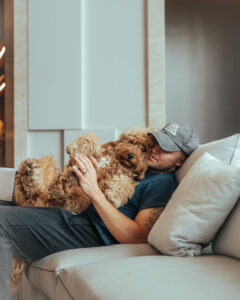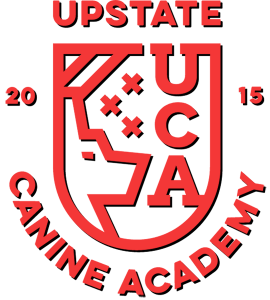Bringing home a new puppy is a thrilling and gratifying experience. However, house training is one of the first and most essential obstacles you’ll encounter as a new puppy owner. Teaching your puppy good potty habits not only promotes a clean and sanitary living environment but also lays the groundwork for their entire behavior and training.

We’ll lead you through house training your new puppy step by step in this detailed guide. We’ll give you the knowledge and tactics you need to successfully teach your furry buddy and establish a solid friendship along the way, from comprehending the basics to solving problems.
The Importance of House Training
Housetraining your new dog is similar to teaching them Einstein’s theory of relativity. Okay, it’s not that complicated, but it’s a necessary ability that will make both of your life a lot easier. Nobody wants to stumble in unexpected puddles or discover hidden treasures around the house, do they? You’ll save time cleaning up messes and create a harmonious living environment if you teach your puppy where and when to do their business.
Guide to House Training Your New Puppy
1. Establishing a Consistent Routine
Dogs, like that friend who orders the same pizza every Friday night, are creatures of habit. By creating predictability in your puppy’s life, you’ll make it easy for them to understand when and where they should be performing their business. Stick to a regular feeding schedule and prevent free feeding, which makes predicting when your pup needs to go more difficult.
Hey, everyone needs a break now and then, including your pooch. Take them outside regularly for toilet breaks, especially after meals, playtime, and naps. This consistency teaches your dog that going outside is far more enjoyable than, say, painting your new rug.
2. Crate Training: The Foundation of House Training
Consider crate training to be your dog’s den – a cozy and secure place for them to retreat to. It is critical to select the proper crate size for your growing pet. You want a crate that is spacious enough for your dog to stand, turn around, and lie down comfortably in. But not so large that they mistake it for a studio apartment and use one corner as their bathroom.
Nobody, including puppies, enjoys being forced to do something they don’t want to do. Praise, rewards, and even interesting toys can help your pup create a positive association with their crate. Increase the amount of time your puppy spends in the crate gradually, always encouraging calm and relaxed behavior. They’ll soon be blissfully napping away in their small den.
3. Positive Reinforcement: Building Good Bathroom Habits
- Using Treats and Rewards
Who doesn’t enjoy sweets? Your pet surely does! Use the power of positive reinforcement by rewarding your pet with goodies every time they perform their business in the appropriate location. It’s like being rewarded with cookies for a job well done – a win-win situation!
- Verbal Praise and Affection
Dogs, like people, crave praise and attention after a long day. When your dog successfully goes pee outside, shower them with vocal praise and kisses. Let them know they’re the best bathroom champion in the world (at least in your world).
- Clicker Training for House Training
Clicker training is more than just a fancy name; it’s also useful in your home training arsenal. You can use a clicker to indicate the exact minute your puppy does their business in the correct location. Use the clicker in conjunction with treats and praise to reinforce the idea that going potty outside is something to be proud of.
You and your new puppy will quickly master the intricacies of house training with patience, perseverance, and a dash of fun. So gather your snacks, put on your optimistic clothes, and prepare for a clean and harmonious home. Best wishes!
4. Handling Accidents: Prevention and Cleanup Strategies
Recognizing when your dog needs to go potty is essential for successful house training. Keep an eye out for indicators such as circling, sniffing, or becoming restless. These are clear indications that they should be taken outside.
Accidents happen; it’s a normal part of life with a new dog. However, if you catch your pet urinating themselves within, it’s critical to interrupt the behavior and divert them outside. A strong, but not unduly harsh, “No!” will suffice. Then hurry them outside to their preferred potty place to complete what they started.
5. Troubleshooting Challenges in House Training
- Dealing with Regression in Training
Despite your best efforts, your puppy may have accidents inside the house again. This is a common occurrence known as regression. Don’t be disheartened! Maintain your patience and consistency in your exercise program. Return to the fundamentals and reinforce positive habits. You’ll get back on track with a little determination.
- Addressing Separation Anxiety and House Training
Separation anxiety might make house training more difficult. Accidents may occur if your dog feels frightened or stressed about being left alone. To remedy this, start by leaving your puppy alone for brief amounts of time and progressively increasing the time. Provide them with stimulating toys and make a safe area for them to feel at ease while you are away.
- Eliminating Marking Behavior
Marking behavior, in which your puppy urinates in small amounts to leave its smell, can be difficult to manage. Make sure your dog gets lots of exercise and mental stimulation to discourage this behavior. When they’re inside, keep an eye on them and interrupt any marking attempts with a calm “No!” Redirect them to their appropriate potty location outside. Crate training is also a great option for dogs who constantly feel the need to bark in the house.
6. Maintaining Success: Long-term Strategies for a Well-Trained Puppy
Maintain a steady regimen to keep your puppy’s toilet training program on track. Maintain consistent meal times, outdoor toilet breaks, and play periods. Consistency teaches your dog what is expected of them and reinforces positive behavior. Don’t leave food and water out for your puppy to drink freely. Give the dog food and water at times when you can bring them outside 15-30 minutes after they eat and drink.
Continue to socialize your puppy with people, other dogs, and new situations. Ongoing training, such as basic obedience instructions, will assist your puppy in maturing into a happy, well-adjusted adult dog.
CONCLUSION
You are well-equipped to confront the problems of house training and set your puppy up for a lifetime of excellent potty habits if you follow the advice, techniques, and strategies discussed in this article. Remember that patience, consistency, and positive reinforcement are essential for success. Your puppy will become a well-trained friend who provides joy and happiness to your home with your dedication and love. Best wishes with your house-training journey!
